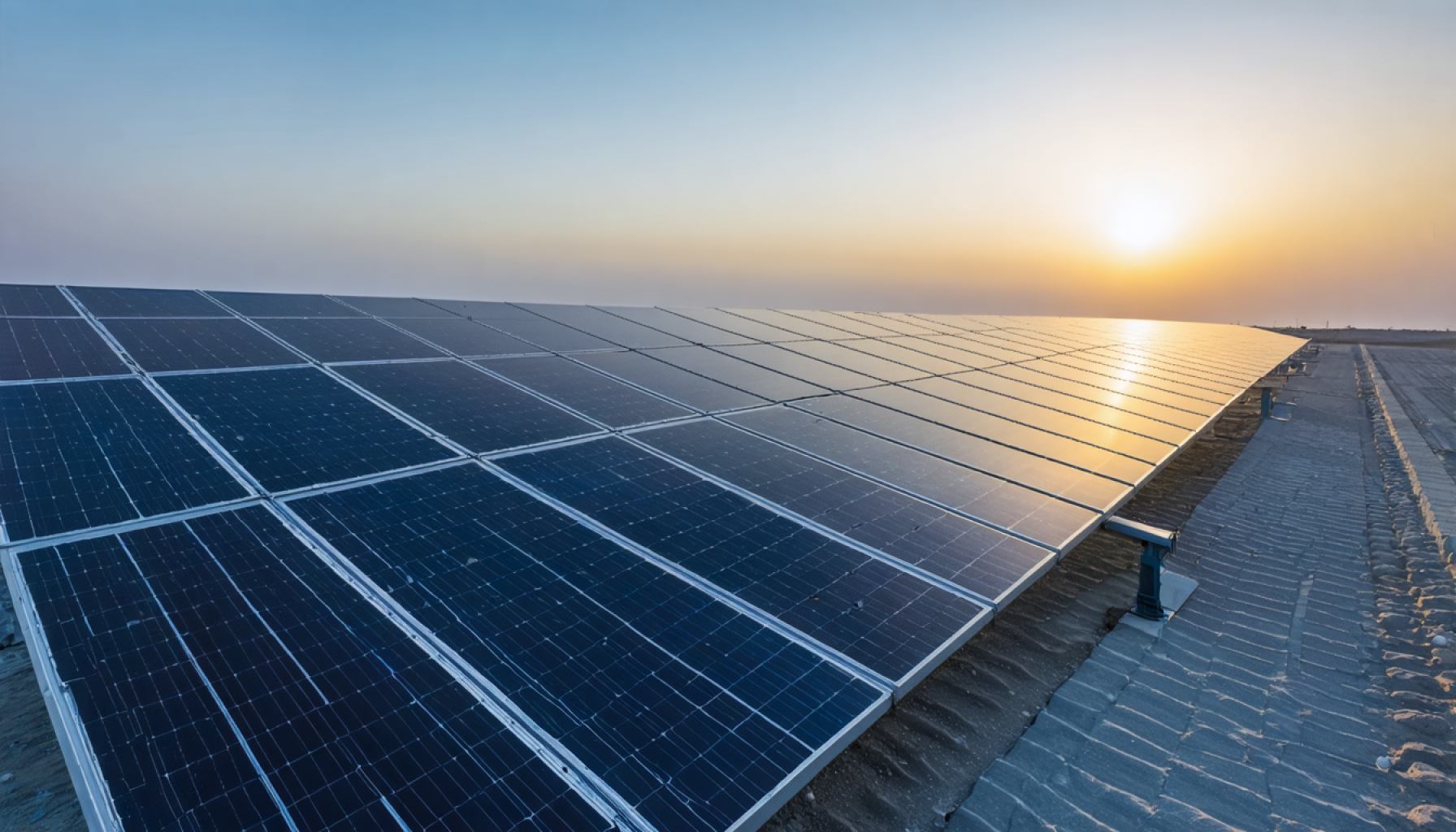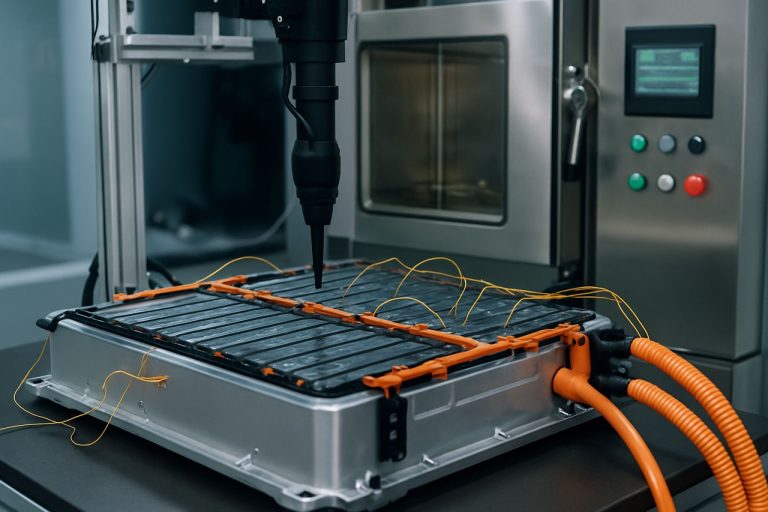
- The Al Shuaibah 2 solar PV power plant in Saudi Arabia’s Makkah Province is one of the largest solar projects in the region, operating with a capacity of 2,060 MW.
- ACWA Power leads this initiative, showcasing Saudi Arabia’s commitment to transitioning to renewable energy sources.
- Operational readiness of the solar plant has been certified by the Saudi Power Procurement Company (SPPC).
- Al Shuaibah 1 complements the capacity with an additional 600 MW of clean energy production.
- Currently, solar power makes up 2.5% of Saudi Arabia’s energy, but the goal is to reach 50% renewable energy by 2030 and achieve net-zero emissions by 2060.
- The solar projects symbolize Saudi Arabia’s vision for a sustainable future, marking the beginning of its solar revolution.
A vast sea of solar panels now stretches across the arid landscape near Jeddah in Saudi Arabia’s Makkah Province, signaling a bold stride towards a sustainable future. The Al Shuaibah 2 solar PV power plant, a colossal endeavor undertaken by the Saudi company ACWA Power, has flicked the switch to full commercial operations and made waves as one of the largest solar undertakings in the region.
This sprawling solar farm, boasting an impressive capacity of 2,060 MW, is a testament to Saudi Arabia’s commitment to redefine its energy sources. The Saudi Power Procurement Company (SPPC) has certified its operational readiness, endorsing ACWA Power’s ambitious leap into the renewable realm. This project also operates alongside its sibling, Al Shuaibah 1, which generates an additional 600 MW of clean energy.
Together, these solar projects mark a significant milestone in the nation’s energy landscape, which, by the end of 2023, saw solar capacity comprising just 2.5% of the total. Yet, this is merely the dawn of Saudi Arabia’s solar revolution. With aspirations as high as the desert sun, the kingdom aims to derive 50% of its power from renewable sources by 2030, envisioning net-zero emissions by 2060.
As the sun sets over the Arabian desert, these shining fields of solar panels serve as beacons of the future—an era where sustainable energy conquers the sands of traditional power. The journey towards a luminous, greener tomorrow has begun, led by giants of steel and silicon under the relentless Middle Eastern sun.
How Saudi Arabia’s Expanding Solar Ventures Could Reshape Global Energy Markets
Introduction
Saudi Arabia’s recent advancements in solar energy, highlighted by the operational launch of the Al Shuaibah 2 solar PV power plant, are not only key to the kingdom’s sustainable energy goals but also pivotal to reshaping global energy markets. Here’s an in-depth exploration of this transformation, including steps to harness solar power, industry trends, comparisons, and future predictions.
How-To Steps & Life Hacks for Solar Energy Adoption
1. Site Selection: Identify ample sunlight exposure with minimal shading. Desert landscapes, similar to Saudi Arabia, offer ideal conditions due to the abundant sunlight and vast open spaces.
2. Permitting and Regulations: Understand local regulations and obtain necessary permits. This can be complex but is crucial for legal compliance and seamless operation.
3. Investment in Infrastructure: Use reliable technologies, such as photovoltaic (PV) systems, to ensure efficiency and resilience. Work with reputable companies like ACWA Power for technology and expertise.
4. Resource Management: Ensure proper maintenance and cleaning systems are in place to keep panels dust-free, maximizing efficiency.
5. Financial Planning: Explore incentives and financing options to reduce initial costs, such as power purchase agreements (PPAs) or government subsidies.
Real-World Use Cases
– Economic Diversification: Saudi Arabia’s solar projects help reduce dependency on oil, aligning with Vision 2030 to diversify the economy.
– Exporting Solar Technology: By becoming a leader in solar production, Saudi Arabia can export both the technology and the electricity generated, bolstering international influence.
Market Forecasts & Industry Trends
– Global Solar Investment Growth: According to the International Energy Agency (IEA), global solar investment is set to surpass $400 billion by 2024.
– Middle Eastern Solar Boom: The Middle East is rapidly increasing its solar capacities, influenced by projects like Al Shuaibah. By 2030, the region could host over 65 GW of solar capacities.
Reviews & Comparisons
– Al Shuaibah vs. Global Projects: Compared to other international projects, Al Shuaibah stands out due to its scale and rapid implementation which is crucial in the ambitious roadmap of Saudi renewable energy targets.
Controversies & Limitations
– Environmental Concerns: While solar projects are generally environmentally friendly, the large-scale installation can disrupt local ecosystems.
– Storage Challenges: Solar energy storage remains a challenge. Without effective battery solutions, energy production is heavily dependent on daylight.
Features, Specs & Pricing
– Capacity and Output: Al Shuaibah 2 has a 2,060 MW capacity, one of the largest in the region. Pricing details remain confidential, though PV costs are generally decreasing globally.
Security & Sustainability
– Energy Security: Increased solar reliance enhances energy security and reduces the volatility associated with fossil fuel markets.
– Sustainability Initiatives: Projects like Al Shuaibah support Saudi Arabia’s goal of net-zero emissions by 2060.
Insights & Predictions
– Job Creation: Emerging green technologies are expected to create new job markets, fostering skilled workforce growth.
– Global Influence: Saudi Arabia’s investments might set a precedent, encouraging neighboring countries to enhance their renewable energy sectors.
Pros & Cons Overview
Pros:
– Significant reduction in carbon emissions.
– Economic diversification and enhanced energy security.
– Technological and infrastructure advancements.
Cons:
– High initial setup costs.
– Dependency on sunshine and storage technology.
Conclusion: Quick Tips
1. Stay Informed: Keep up with industry news on renewable energy technologies and policy updates.
2. Explore Opportunities: Consider investments or partnerships in solar projects or technologies to maximize benefits.
3. Leverage Technology: Adopt emerging storage solutions to overcome intermittent solar generation limitations.
By embracing solar investments like the Al Shuaibah power plant, nations can significantly reduce reliance on fossil fuels, contribute to global sustainability efforts, and position themselves as leaders in the energy transition. For more insights on global renewable energy initiatives, visit IEA or IRENA.



